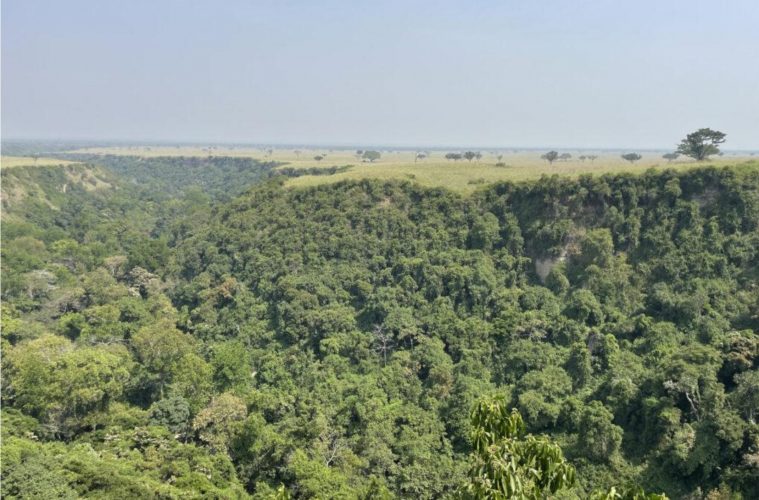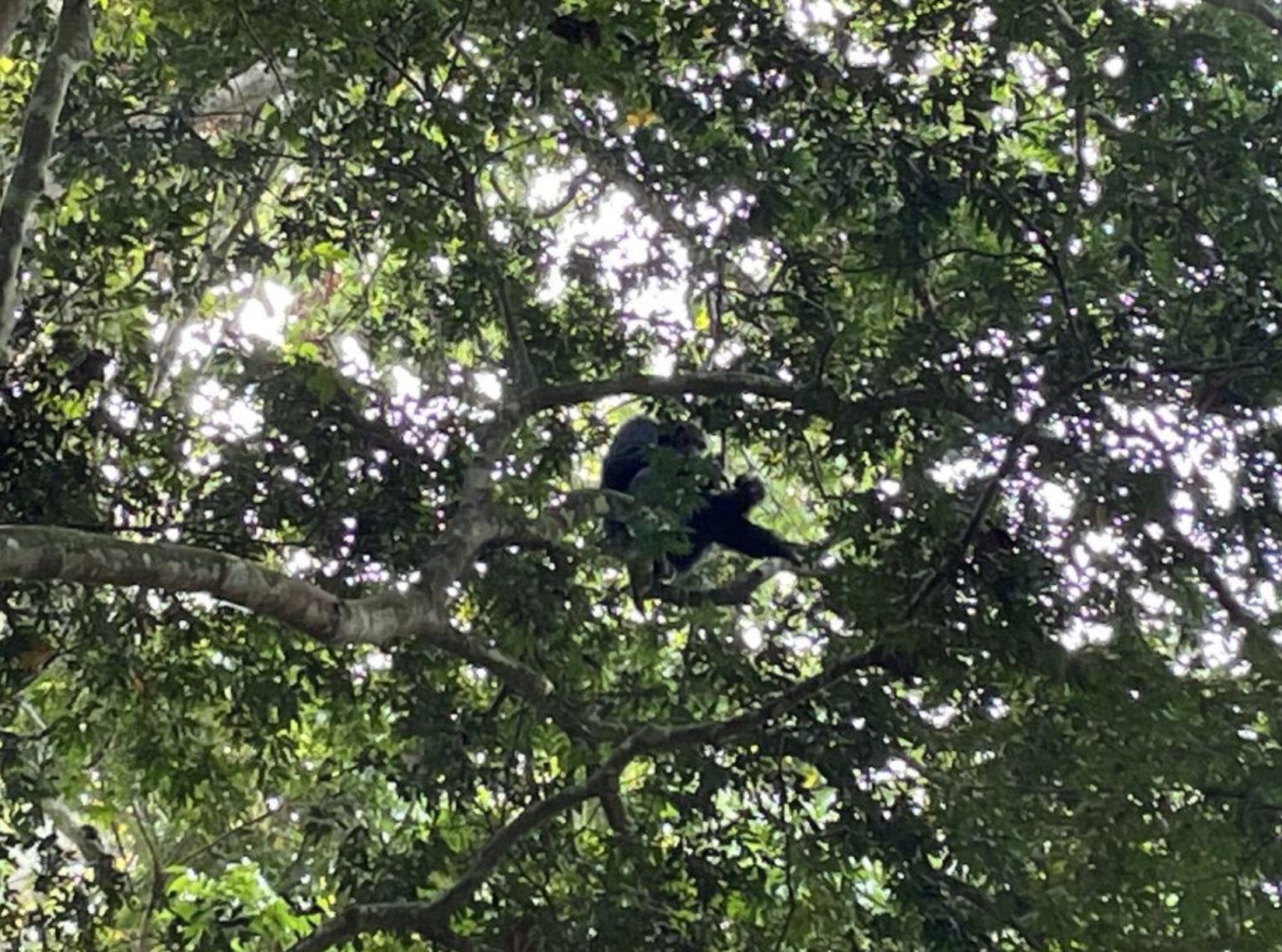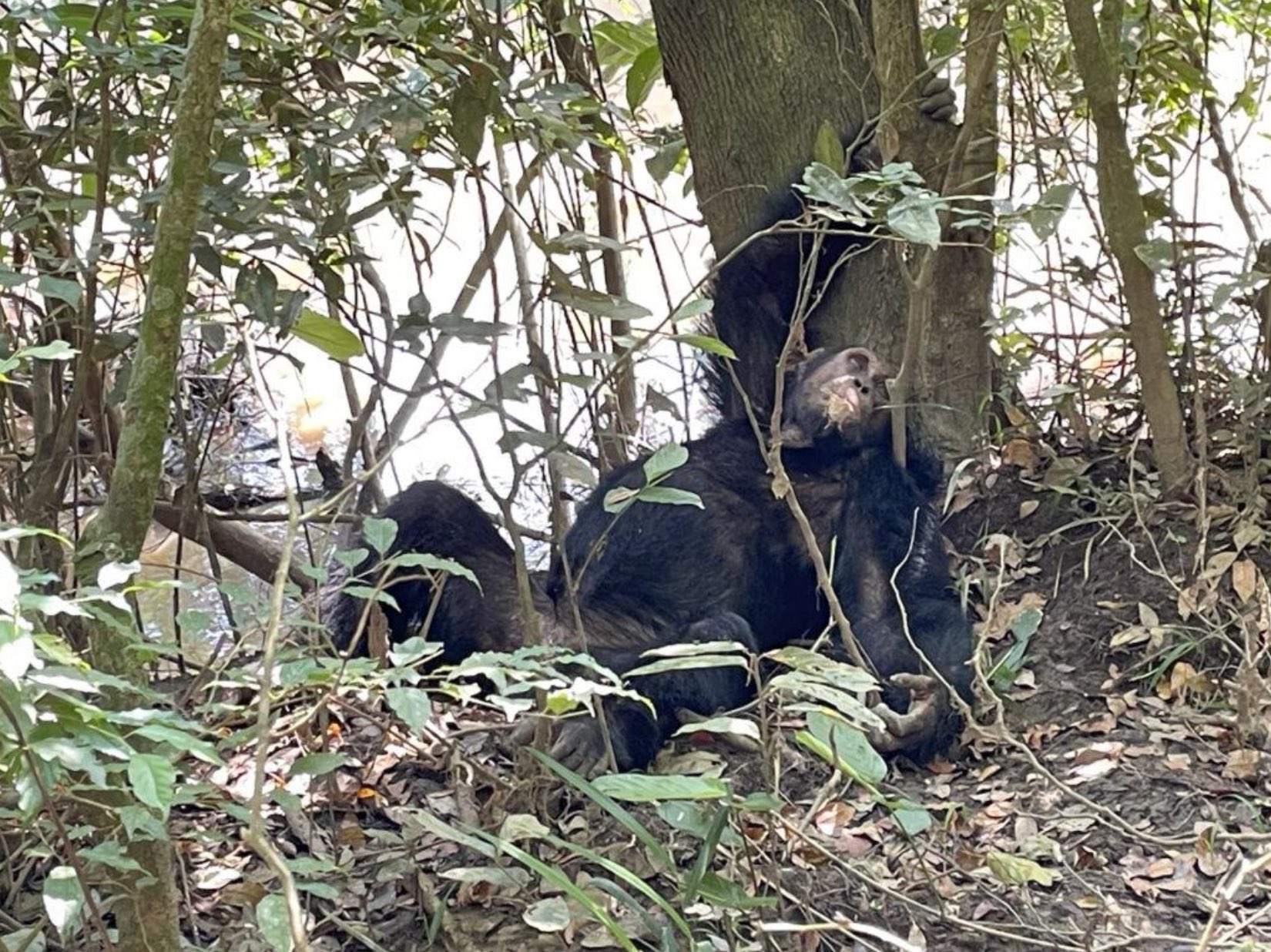In his book “My African Journey”, Winston Churchill named Uganda the Pearl of Africa. What should visitors see that so delighted the Prime Minister of Great Britain from the time when this East African country was still under British colonial rule?
Certainly, Queen Elizabeth National Park – the place that impresses with the wild beauty of nature!
Uganda is a country that can boast of wonderful national parks and one of them is Queen Elizabeth National Park; where nature lovers have opportunity to admire wild animals in their natural habitat.
Founded in 1952, the park covers an area of 1,978 km². And, the name of the park, of course, comes from Queen Elizabeth II, who visited the “Pearl of Africa” in 1954.
Definitely consider a safari to admire wild elephants, buffaloes, antelopes, as well as predators such as lions and leopards. QENP is also inhabited by apes, including chimpanzees. Among the birds, visitors can see e.g. cormorants, pelicans, and even ospreys. Queen Elizabeth Park is famous for its lakes too, including Lake Edward and Lake George.
Remember: If you’re planning a visit to Queen Elizabeth National Park, remember that the entrance ticket costs $40 per day and is valid for 24 hours from the time of purchase.
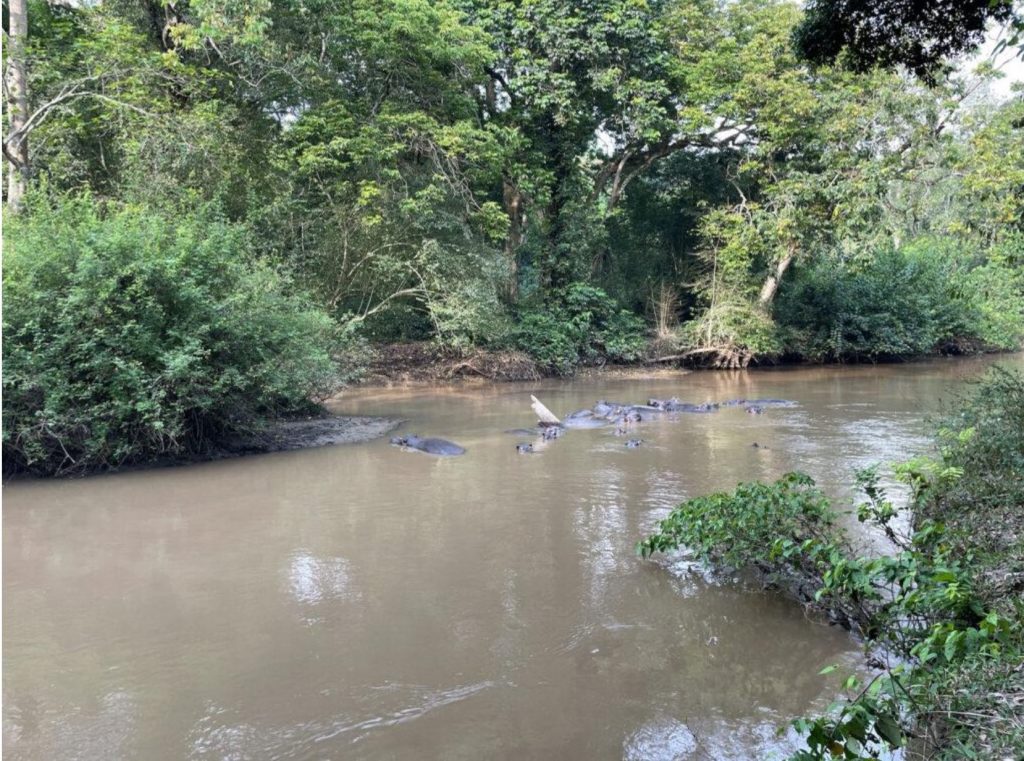
Hippos take a refreshing bath in Kyambura Gorge
What to see at Queen Elizabeth National Park?
Three things visitors should experience in Queen Elizabeth National Park: chimpanzee trekking, the Kazinga Canal cruise, and crater lakes exploration.
Kyambura – Cheap Chimpanzee Trekking
Kyambura Gorge is a slightly off-beaten place that should be on your list of things to see in Uganda!
The gorge is filled with dense tropical rainforest, which is also home to numerous birds, primates, and mammals such as elephants and hippos. The gorge is surrounded by vast summer meadows on all sides. The savanna overlooking Kyambura receives a lot of sunlight, but the gorge itself remains relatively cool because the tall trees stop the sun from penetrating.
The main attraction of Kyambura is chimpanzee trekking. It’s a really nice alternative to amazing, but unfortunately, expensive mountain gorillas trekking ($700 in Uganda). Chimpanzees can be observed in several places in Uganda. The most popular of them is Kibale Forest, where such a trek costs 150 USD. However, we decided on the Kyambura Gorge. And, while the chances of spotting chimpanzees are lower than in Kibale, the price is also lower – only $50.
Practical Information
The most important thing you need to know is that the treks start only at set times; the first one starting at 8:00 am, the second one at 1:00 pm. And, although Africans have a very relaxed approach to time, this rule does not apply to trekking with chimpanzees. After paying the fee at the park ticket office, you will have to drive a few more minutes to the starting point. Predicting your question – yes, you can pay by card. From there, visitors go for a walk in the company of a park ranger. The trekking itself takes about 3-4 hours.
Be sure to bring comfortable shoes and water. Trekking is not super demanding, but there are slippery and steep, muddy approaches.
Have We Found Chimpanzees?
Our ranger estimated the chances of finding chimpanzees at 75%. About 15 minutes after delving into the forest, we found… hippos.
A whole herd of these seemingly amusing but very dangerous mammals was sitting comfortably in a pond. Fortunately, they were quite far away and apparently not interested in us at all. Soon after, it turned out that the sight of hippos in the Kyambura Gorge was not unusual. We spotted at least a dozen different herds enjoying a refreshing water and mud bath.
Back to chimpanzees.
We walked in the forest for 3 hours, and our trekking was slowly coming to an end. To be honest, we didn’t have much hope of spotting them. Then suddenly, our guard-guide received information from his fellow about the location of chimpanzees! We quickly marched to the indicated place and looked high up, where we saw two chimpanzees in the treetops.
After several minutes, our distant cousins decided to come down to the ground.
Our guard explained that we were honored to meet the leader of the local community, a chimpanzee named Mweya. The other ape was his bodyguard (seriously!).
For 20 minutes, Mweya and his homie led us only along known paths. Finally, Mweya decided it was time to rest. It turned out that our dear chimpanzee had eaten fermented fruit and, quite simply, was as full as a boot!
Mweya leżał wygodnie pod drzewem, co pozwoliło nam zrobić mu kilka zdjęć.
So, in short, our trekking was a success!
💵 $50
🕙 Trekkings start at 8:00 and at 13:00
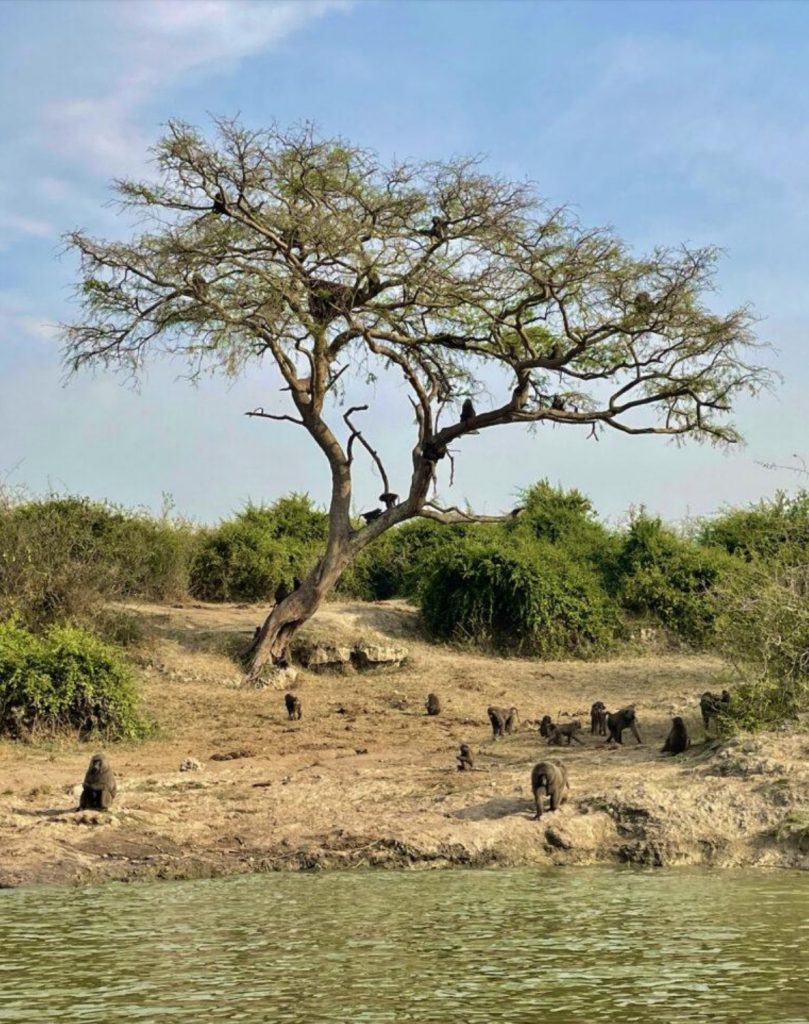
Baboons have taken over this territory
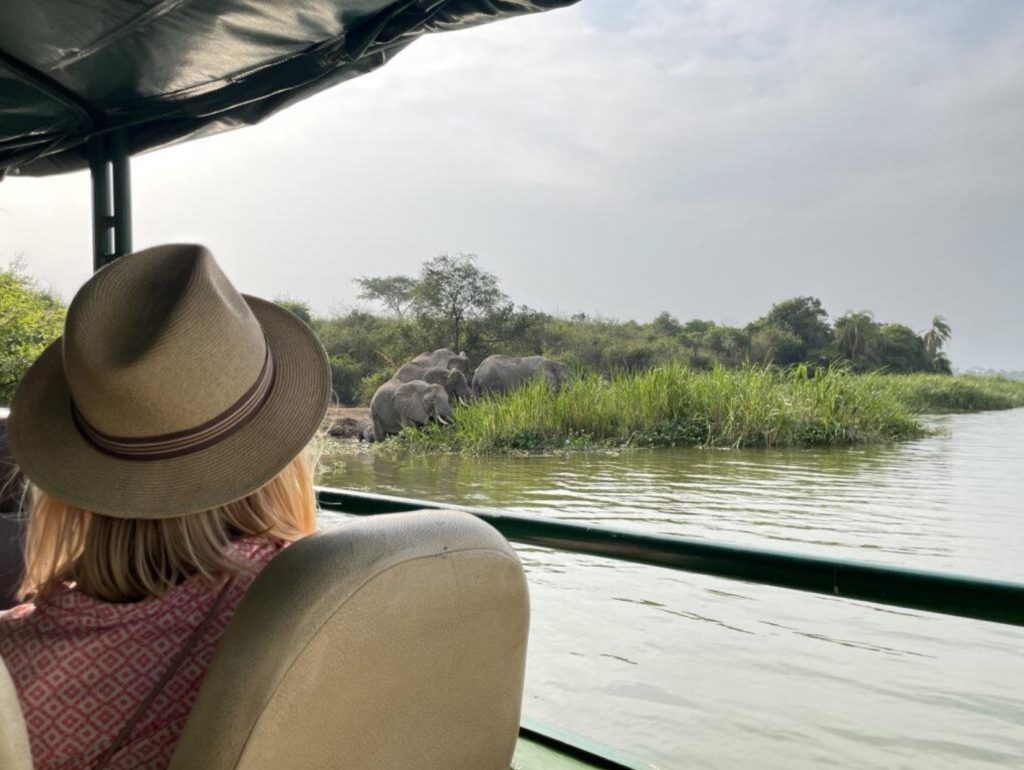
Elephants in Kazinga Channel
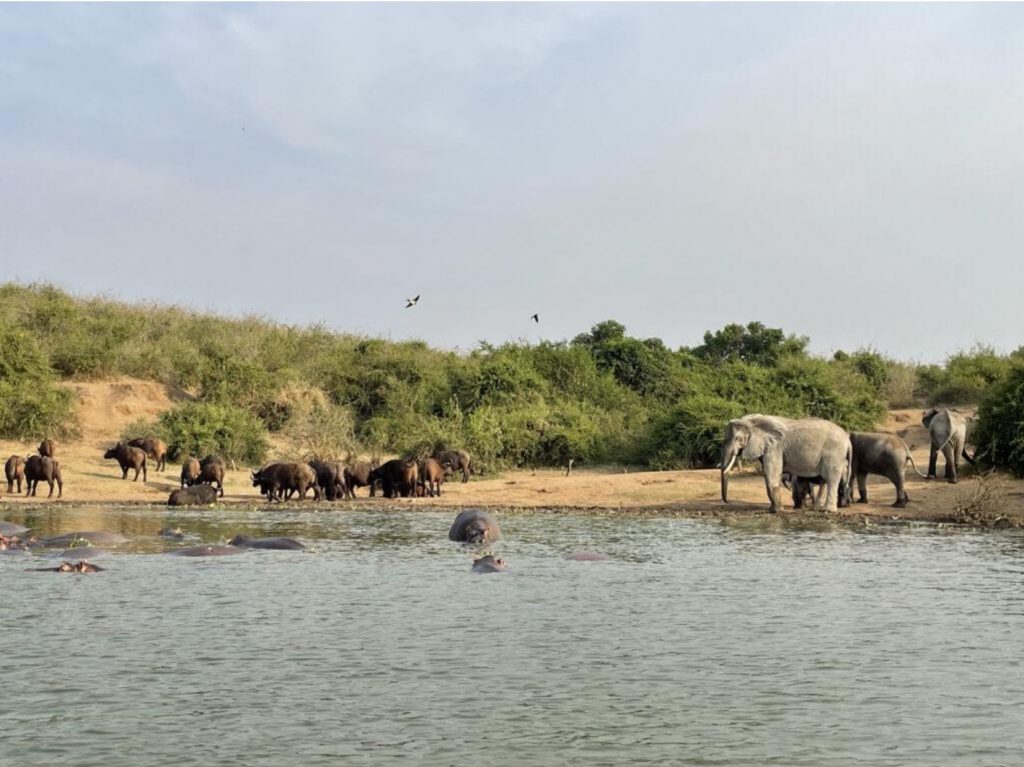
A high-level meeting of buffaloes, hippos and elephants.
Kazinga Channel
The Kazinga Channel is a 32 km long natural water corridor that connects Lake George with Lake Edward. The names of the lakes refer to the British monarchs, Edward VII and his son – George V (the one from the movie “The King’s Speech”). And since we are talking about Queen Elizabeth National Park, the Windsor monarchy is almost complete.
Kazinga Channel is home to the world’s largest concentration of hippos (there are over 2,000) and a place with a high population of Nile crocodiles. In addition, along the Kazinga Channel, you can spot elephants, buffaloes, the ubiquitous baboons, monitor lizards (the largest lizards in Africa), and over 60 species of birds.
Practical Information
The most popular way to explore the channel is a boat trip. Such an adventure lasts about 3 hours and costs $30 per person. Each boat is accompanied by a guide in addition to its helmsman.
Remember: besides paying for the boat, you have to pay a $40 entrance fee to Queen Elizabeth National Park (if this is your first activity).
The public cruises begins at 11:00 AM with another at 2:00 PM. But, of course, there are also private boats, and you can get along with a private owner at any time – as long as it’s during the day!
According to our guide, most animals can be found in the middle of the day. The reason is simple – it’s really hot during the day, and Kazinga Channel allows you to cool down a bit. However, we decided to start at 4:00 PM to catch the golden hour, and we absolutely do not regret it. Not only was the temperature much more bearable but there were quite a few animals. Besides, it matched perfectly with the earlier trekking with the chimpanzees.
Kazinga Channel Cruise
I don’t think it’s necessary to write too much about the Kazinga Channel cruise. It was just outstanding! We saw dozens of different birds, hundreds of hippos, 4 herds of elephants, a whole battalion of baboons, and dozens of buffaloes. We weren’t getting very close because we didn’t want to scare or stress the animals.
💵 $30
🕙 Public boats start at 11:00 AM and 2:00 PM, private – whenever you want (but only during the day)
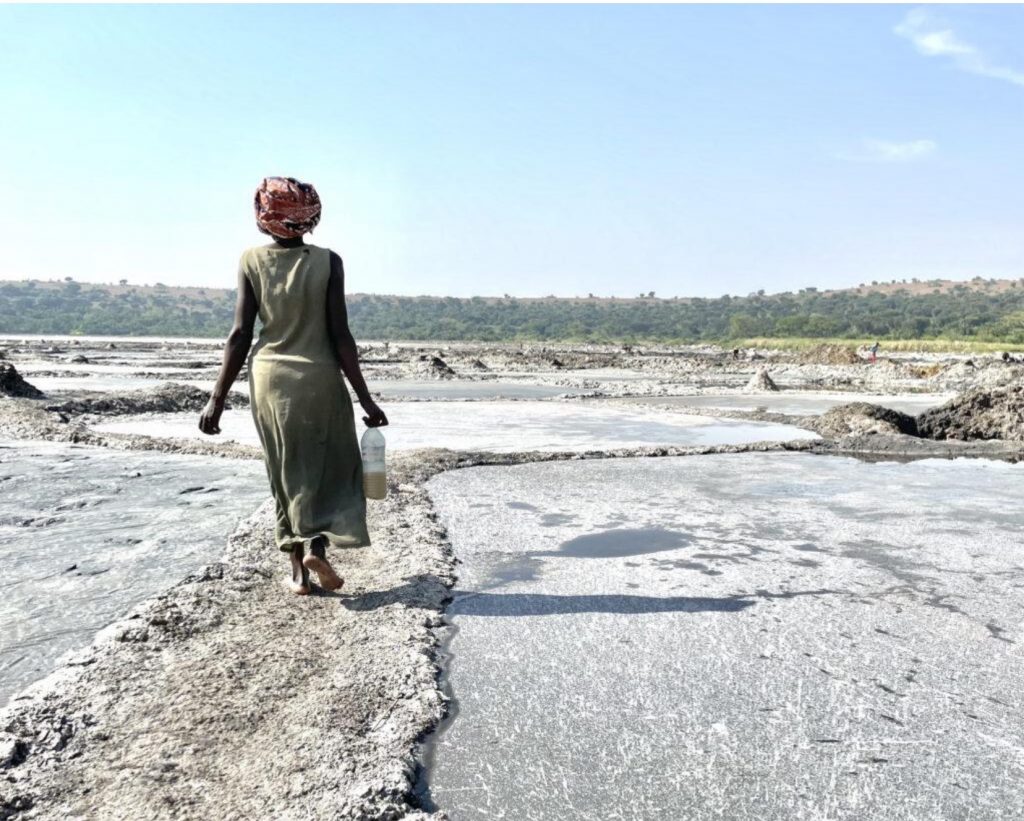
A woman walks around Lake Katwe through specially designated “corridors”
Crater Lakes
Crater lakes near Queen Elizabeth National Park are a relatively young formation on the geological map of Uganda. New because research indicates that the lakes were formed as a result of volcanic activity only 8,000 – 12,000 years ago.
According to the information I found, there are about 20 of them around the city of Fort Portal. In my opinion, it’s a great place for a short – or longer – stop after a few hours’ drive from Kampala or Entebbe.
Crater lakes are extremely picturesque – it is worth stopping anywhere and going for a completely casual walk. For example, near Lake Bisina.
Katwe Salt Lake
One of the most interesting crater lakes is undoubtedly the Katwe salt lake. It is an extraordinary place where nature and history intertwine in a surprising way. Katwe Lake is one of the few salt lakes in the world that is located on volcanic terrain. It was created as a result of a volcanic eruption that created a unique ecosystem.
Today, Lake Katwe is an important source of salt for the local community, which has used the resource for centuries. It is worth seeing what the salt extraction process looks like and talking to the locals, who will gladly (and for a small fee) share their knowledge and experience.
As I mentioned, this is absolutely not all that can be seen in the Queen Elizabeth National Park in Uganda. We were mainly limited by the budget, which is why we decided on such and not other places.
__________________________________________________
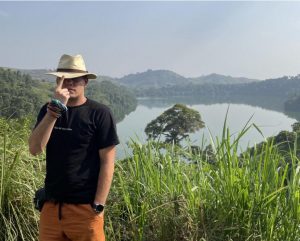 Michal Jonca is passionate about trail running and travel. He is a Travel Leader at Solisci Adventure Club and the Community Manager at Passport Photo Online.
Michal Jonca is passionate about trail running and travel. He is a Travel Leader at Solisci Adventure Club and the Community Manager at Passport Photo Online.

